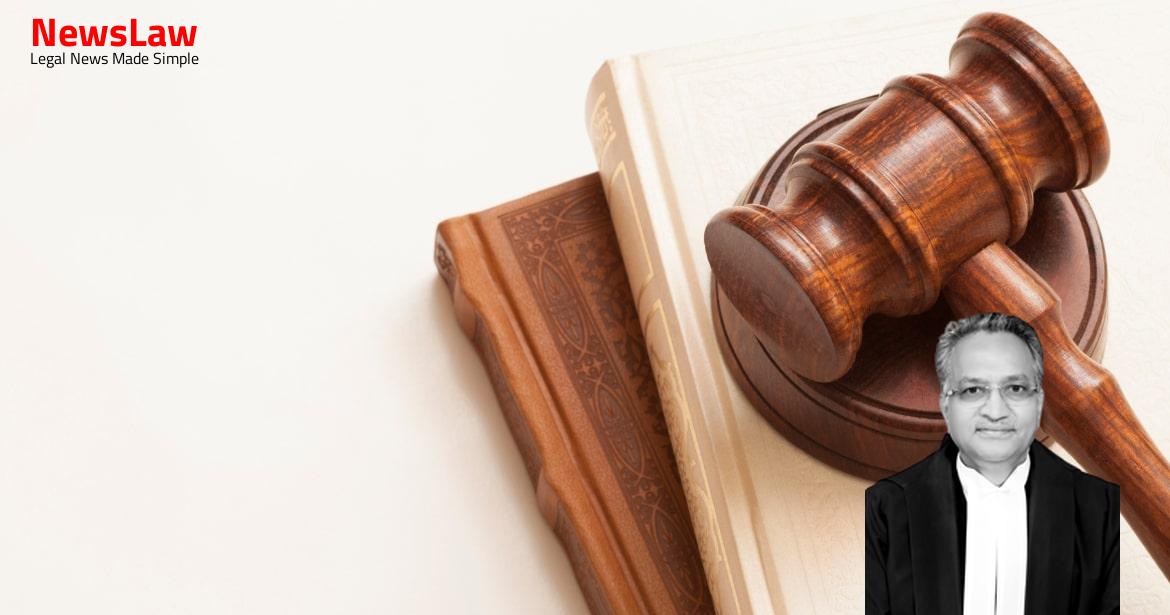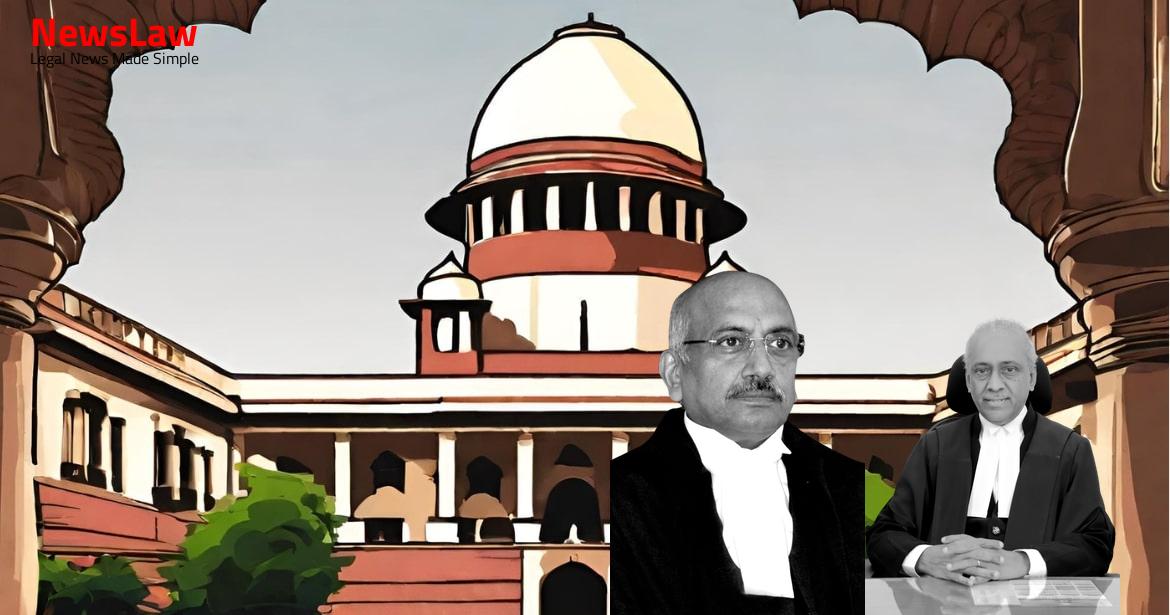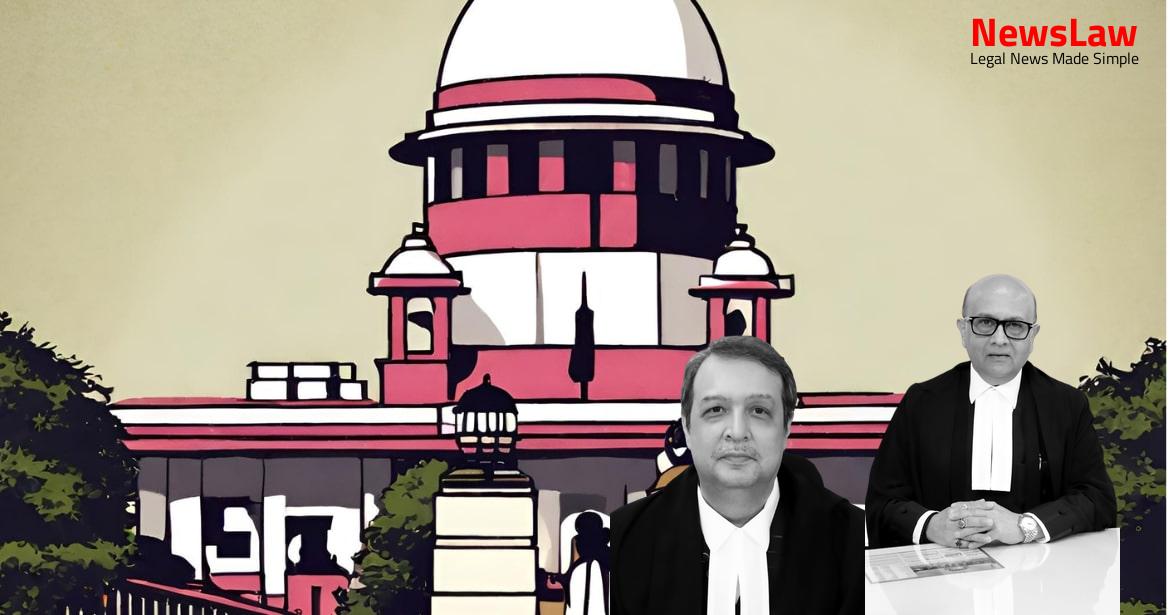Explore the depth of legal analysis in a multi-faceted insolvency resolution case, where the court’s meticulous examination of laws and regulations shapes critical decisions. Unravel the complexities of corporate insolvency proceedings through a lens of legal scrutiny, shedding light on pivotal court rulings and their implications on various stakeholders.
Facts
- IDBI Bank sought exclusion of the period of pendency of the application for clarification on the voting percentage from the 270-day period for completion of CIRP.
- Several disputes and objections arose even after NBCC’s resolution plan was approved by the Committee of Creditors with a substantial majority.
- The disputes involved dissenting financial creditors, dissatisfied homebuyers, displeased land providing agency, disillusioned creditor of a wholly-owned subsidiary, and disappointed minority shareholders.
- The resolution plan for Jaypee Infratech Limited has impacted numerous persons and entities, including buyers of flats/apartments.
- Appeals against NCLT’s orders were transferred to the National Company Law Appellate Tribunal and then to the Supreme Court for consolidated hearing.
- Amicus curiae reported the need to refund INR 1,300 crores to homebuyers, prompting a stay on further demands from certain buyers.
- NCLT called for replies on proceeding with CIRP and the RBI’s application was deferred for consideration at a later stage.
- Jaiprakash Associates Limited and its stakeholders expressed concerns over the resolution process and a deposit of INR 750 crores.
- A brief outline of the complex issues and parties involved was deemed necessary before proceeding with the cases.
- The CIRP for Jaypee Infratech Limited began in 2017, with homebuyers being treated as ‘other creditors’ initially, leading to subsequent litigation.
- Pertinent court directions were issued to JAL regarding refunds to homebuyers, and the IRP was directed to continue managing JIL during the proceedings.
- Several factors were considered by the Court before issuing directions for the completion of CIRP, including the interests of homebuyers and stakeholders.
- The amount of INR 750 crores deposited by JAL/JIL in the Court was directed to be transferred to NCLT.
- An application was moved by the Interim Resolution Professional before NCLT for submission and approval of the resolution plan.
- The Amendment Ordinance clarified the status of homebuyers as financial creditors.
- The resolution plan submitted by NBCC was approved by CoC with over 97% voting share of financial creditors.
- Multiple objections and propositions were submitted by stakeholders on the resolution plan.
- The Adjudicating Authority rejected the stand taken by IRP and NBCC on payment to dissenting financial creditors.
- The delay in CIRP completion was attributed to the legal process, and the Court passed orders for revival of the corporate debtor.
- NBCC appealed against the order of the Adjudicating Authority before NCLAT.
- Associations of homebuyers sought permission to maintain their appeals under Section 62 of the Code.
Also Read: Legal Analysis in Joint Trials Error
Issue
- The Adjudicating Authority erred in not approving the treatment of dissenting financial creditor like ICICI Bank Limited in the resolution plan as per Section 30(2)(b) of the Code read with Regulation 38(1)(b) of the CIRP Regulations.
- The Adjudicating Authority erred in modifying the terms of the resolution plan and directing payment to the dissenting financial creditor in monetary terms.
- The modification of the step provided in the resolution plan for fixed deposit holders was questioned, including the direction to make provision towards the dues of unclaimed fixed deposit holders.
- The Appellate Authority’s decision to provide for an Interim Monitoring Committee for the resolution plan implementation during the pendency of appeals was also brought into question.
Also Read: Dismissal of Contempt Petition: Legal Analysis
Arguments
- The appellants, who are dissatisfied with the resolution plan, have raised various objections against the proceedings of the Committee of Creditors and the resolution plan itself.
- They argue that the resolution plan lacks necessary arrangements, is noncompliant with RERA and prejudicial to the rights of homebuyers.
- One group of objectors requests that completed or nearly completed housing projects should be kept out of the resolution plan.
- Another association of homebuyers contends that the INR 750 crores deposit made by JAL should be returned as it was not intended for financing JIL’s insolvency resolution.
- The dissenting financial creditors, including ICICI Bank, argue that the resolution plan does not provide for cash payment as required by Section 30(2)(b) of the Code.
- They claim that the treatment of dissenting creditors in the plan is vague and speculative, and their interests are unfairly compromised.
- Various submissions have been made on the interpretation of ‘payment’ in the context of the Code, with conflicting views on whether payment must be in cash only.
- There are objections to the provision in the plan where dissenting creditors are offered land and equity in SPVs instead of cash as payment.
- Concerns are raised about the modification of the resolution plan by the Adjudicating Authority and whether it was within its jurisdiction to make such modifications.
- The submissions emphasize the need to protect the interests of dissenting financial creditors and ensure that they are not worse off than in the event of liquidation.
- The arguments made by the respondents in relation to the resolution plan are discussed.
- Various stakeholders, including homebuyers and financial creditors, have raised objections and submissions regarding the resolution plan.
- The respondents contend that the resolution plan does not comply with certain regulations and laws, such as the Securities and Exchange Board of India Regulations and the Insolvency and Bankruptcy Code.
- Issues related to homebuyers’ interests, minority shareholders’ treatment, and the rights of different parties under the plan are highlighted.
- Concerns regarding the transfer of assets, payment to dissenting financial creditors, and adherence to contractual agreements are addressed in the arguments presented by the respondents.
- The respondents also discuss the implications of the resolution plan on various stakeholders, including financial institutions and statutory bodies like YEIDA.
- The debate over the treatment of debts, liquidation costs, and the rightful ownership of certain funds deposited by a party is a key point of contention in the respondents’ arguments.
- Compliance with legal provisions, protection of stakeholders’ interests, and the commercial viability of the resolution plan are central themes in the arguments presented by the respondents.
Also Read: Legal Analysis on Goods Confiscation and Penalties
Analysis
- The directors, partners, and one representative of operational creditors may attend committee of creditors meetings but cannot vote.
- Creditors can appoint an insolvency professional to represent them in meetings, and fees will be borne by the creditor.
- Each creditor votes based on their financial debts owed.
- The resolution professional assigns voting shares to creditors as determined by the Board.
- Meetings of the committee of creditors are conducted as specified.
- The resolution professional has various duties including custody of assets, raising interim finances, and maintaining updated lists of claims.
- Proceeds from liquidation assets are distributed in a specific order of priority, as specified in the Code.
- Provisions of the Code override other laws in case of inconsistency.
- The committee of creditors can request financial information from the resolution professional at any time.
- Meetings of the committee of creditors are conducted by the resolution professional who notifies all relevant parties.
- Appeals against orders can be made to the National Company Law Appellate Tribunal.
- Distribution of assets is outlined in detail, including the deduction of fees payable to the liquidator.
- The resolution plan must provide for insolvency resolution and specify various measures for maximizing asset value.
- Submission of a resolution plan requires adherence to specific guidelines as laid out in the Code.
- The Code provides for the duties of interim resolution professionals and authorised representatives.
- Committees of creditors are constituted based on specific criteria, and voting shares are determined according to financial debts owed.
- Provisions are made for electronic means of communication between authorised representatives and creditors.
- Approval of resolution plans by the committee requires a specific percentage of voting share.
- Certain provisos and explanations clarify aspects related to resolution plans, voting shares, and eligibility criteria for resolution applicants.
- The Code specifies the binding nature of approved resolution plans on various stakeholders involved.
- The Code outlines various procedural requirements and timelines for the completion of the corporate insolvency resolution process.
- The Chaudhary Committee recommended granting additional compensation of 64.7% to landowners whose land had been acquired.
- The Allahabad High Court ruling in the Gajraj case led to the demand for additional land acquisition compensation.
- The Hon’ble Supreme Court allowed the IRP to proceed with CIRP by vacating the initial stay.
- The disbursement of Rs. 750 Crore to Homebuyers was deemed improper as it favored a specific group of creditors, as per the Chitra Sharma case.
- Majority vote of 75% or more of the creditors committee is required for decision-making, including a cram down option for dissenting creditors.
- Operational creditors are excluded from the creditors committee as they may not have the capability or willingness to participate in decisions.
- The Full Bench of Allahabad High Court decision on additional compensation to landowners impacted the ongoing cases.
- The creditors committee is empowered to make final decisions by majority vote including approving resolution plans.
- The Committee of Creditors in Essar Steel case had to ensure adherence to specified parameters in the resolution plan.
- The interpretation of statutory provisions and relevant case laws guided the decision-making process.
Decision
- Mr. Bidhwajit Dubey, learned Counsel for Respondent No.5 – IDBI Bank, accepts Notice.
- Reply affidavits to be filed within two weeks.
- Rejoinders, if any, to be filed within one week thereafter.
- Enlargement of time granted for completion of CIRP in exceptional circumstances.
- INR 750 Cr to be made available to the Corporate Debtor/Resolution Applicant, to be deposited by 15-6-2018.
- No issuance of new information memorandum or entertainments of new expressions of interest by IRP.
- Resolution Plans to be submitted within 45 days from the judgment date.
- Projectwise chart to be prepared for disbursement of amount on pro rata basis to homebuyers.
- All appeals, transfer cases, transfer petitions stand disposed of.
- Lease of land for the Concession Period, land to be transferred by TEA to Concessionaire.
- Interim order dated 22.04.2020 challenged by NBCC.
- IRP directed to complete CIRP within extended time of 45 days.
- Payment of INR 1084 Crores to JIL for effective implementation of Resolution Plan.
- Various aspects of accounting by NBCC mentioned.
- Directors not to leave the country without leave of the Court.
- Lease premium and terms for transferred land specified.
- Steps 6A and 6B in the resolution plan elaborated.
- Directives for depositing Rs 2000 crores and no alienation of assets by Directors.
- IRP to remain in management during the proceedings.
- Instalments for further payments detailed.
- Order dated 13.11.2017 appointing amicus curiae and opening web portal mentioned.
- Directives for further deposit of Rs 200 crores and Rs 125 crores.
- Directions regarding demands from homebuyers for refund and deposits to be paid by developers.
Case Title: JAYPEE KENSINGTON BOULEVARD APARTMENTS WELFARE ASSOCIATION Vs. NBCC (INDIA) LTD (2021 INSC 206)
Case Number: C.A. No.-003395 / 2020



